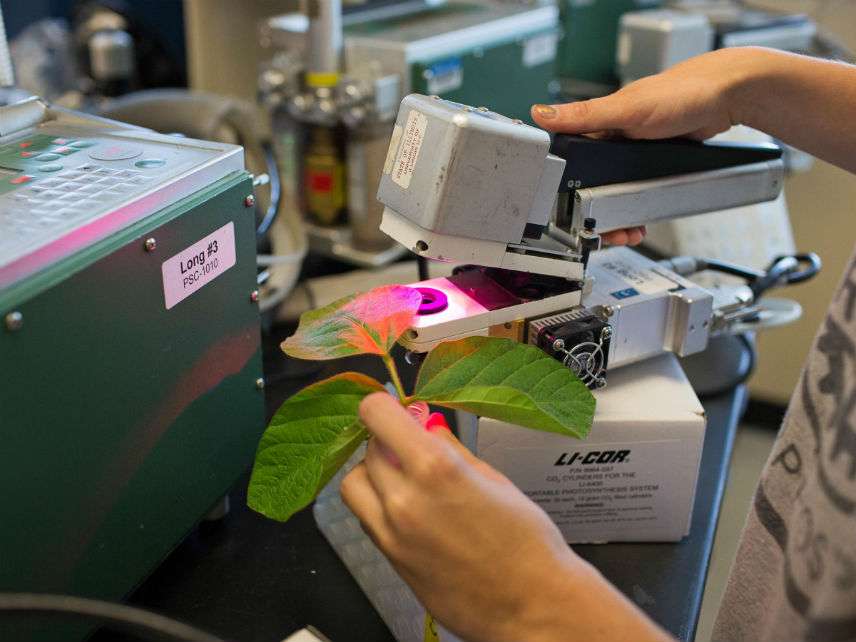Bioengineering Photosynthesis Boosts Crop Growth by 40 Percent
Malthusian predictions of global famines keep receding.

Researchers at the University of Illinois report in Science that they have engineered crops that are 40 percent more productive than conventional crops.
Green plants containing the protein rubisco use sunlight to convert water and atmospheric carbon dioxide into life-sustaining organic compounds, such as glucose. Photosynthesis is also responsible for almost all of the oxygen in the atmosphere. There is, however, a glitch in the process. About 20 percent of the time, rubisco grabs oxygen molecules instead of carbon dioxide, resulting in the creation of a plant-toxic compound that must be eliminated through the process of photorespiration. Photorespiration uses up resources that could have been devoted to producing more growth and yield.
The Illinois researchers have engineered new detoxifying pathways that save enough resources to boost plant growth by 40 percent. They report that these engineered plants developed faster, grew taller, and produced about 40 percent more biomass, most of which was found in 50-percent-larger stems. Because higher temperatures result in less efficient photosynthesis and greater levels of photorespiration, the researchers believe that this bioengineering feat will help farmers maintain and increase yields in the face of future climate change.
The researchers tested their hypotheses in tobacco, but the team is now seeking to use their techniques to boost the yield of soybean, cowpea, rice, potato, tomato, and eggplant.
Thus do Malthusian predictions of global famines continue to recede. "In the 1970s hundreds of millions of people will starve to death in spite of any crash programs embarked upon now. At this late date nothing can prevent a substantial increase in the world death rate," declared the Stanford biologist Paul Ehrlich in his 1968 book The Population Bomb. Needless to say, he was wrong. Thanks to crop breeders like Norman Borlaug, the amount of cereals per capita has increased from about 600 pounds in 1968 to more than 840 pounds now.
A 2017 study calculated that food production will need to increase between 25 to 70 percent to meet global demand in 2050. If the current global rising trend in crop yields is simply maintained at 1.4 percent annually for the next 32 years, that implies a 56 percent increase by 2050. Breakthroughs like this will make achieving that goal even easier, and in the process will enable humanity to spare and restore more land to nature.


Show Comments (16)